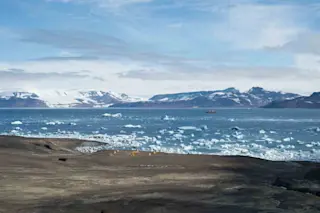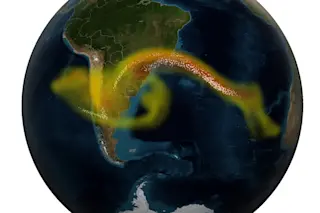A view of the researchers camp on Vega Island from on high. (Credit: Antarctic Peninsula Paleontology Project) A recent expedition to Antarctica has returned with a cache of fossils and data gathered over the course of almost two months of work on the frozen continent. Before you ask what they found, however, let's get to the real question: What were they even doing there in the first place? Hunting for fossils in the most inaccessible and inhospitable continent on the planet, where over 99 percent of the ground is covered in solid ice, seems like a tall order, verging on an exercise in masochism. Antarctica may be possessed of bone-chilling winds and desolate tundras, but it also hides a trove of fossils from one of the most intriguing epochs of life on earth. The Antarctic Peninsula Paleontology Project, or AP3 for short, is a diverse team of paleontologists and geologists, ...
Extreme Fossil Hunters Dig the Dirt in Antarctica
The Antarctic Peninsula Paleontology Project uncovers significant fossils, including potential new species from a key evolutionary period.
More on Discover
Stay Curious
SubscribeTo The Magazine
Save up to 40% off the cover price when you subscribe to Discover magazine.
Subscribe













